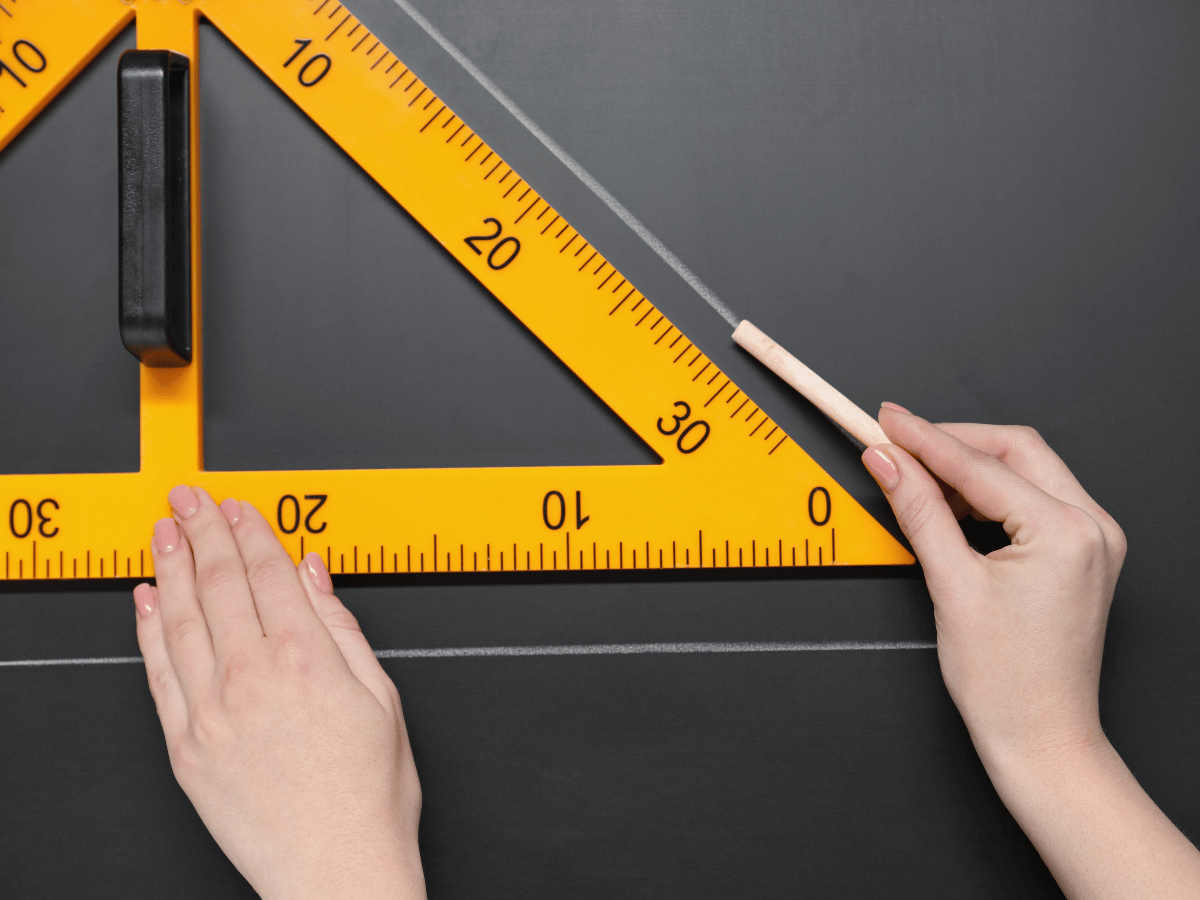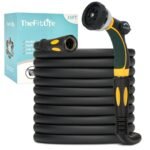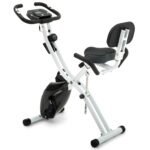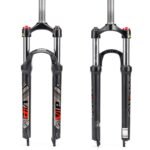Introduction On How To Measure Draw Length and Draw Weight
In this article, you will learn how to measure draw length and draw weight accurately. We will discuss the pull strength of the bow and the lbs it can handle. You can either use our Calculator or measure by hand using accurate measurements.
Another option to measure draw length and draw weight is to use a digital scale or a draw weight scale for more precise results. Additionally, you can use a luggage scale to accurately measure the weight of your belongings.
Read More OutdoorGoodness Articles:
- Archery for Beginners: Recreation, Sport And Hunting [Guide]
- Traditional Archery For Beginners: Is Archery Hard?
- Guide: Best Archery Bows For Beginners?
- Best Archery Gear For Beginners [Our Top Choices Only]
- How Much Does It Cost to Start Archery? [Absolutely Lowest]
- 5 Secret Best Archery Targets For 2023 [Reviewed]
Importance of the Measure Draw Length and Draw Weight
Firstly, when it comes to archery, the draw length of compound bows and recurve bows is important because that will determine your proper pull strength. Additionally, it’s essential to consider the use of new arrows for optimal performance when you measure draw length and draw weight.
Draw length is the distance from the nock point to the grip throat plus 1 ¾ inch when fully drawn for target archery shooters using a heavyweight bow, such as a recurve. Furthermore, measuring different draw lengths will be used to determine the appropriate draw weight scale for arrows of about the same length needed.
Secondly, the reason to get the correct draw length is that most archery bows’ draw weight is always measured at a standard 28” draw length. This ensures accuracy when measuring the weight of the bow in pounds (lbs) and allows for consistent shooting.
The archery bow draw weight changes, from the standard 28 pounds, at different draw lengths. The lbs arrow graph illustrates this variation. The bow scale can add or subtract draw weight of the arrow as you move further from the standard 28″ draw length. The pound bow and the graph are useful tools to measure this.
So, get it right the first time. Try not to make your draw length longer than it should be, as this will affect your accuracy when measuring the pound bow weight using a bow scale and graph.
Measure Draw Length and Draw Weight Using a Calculator
First Enter Your Height in Inches and Next Enter Your Body Weight in Pounds (lbs) and Lastly Push The Calculate Button
Bow Draw Length Calculator
Bow Draw Weight Calculator
Your optimal bow draw length is: inches.
Your optimal bow draw weight is: pounds.
DIY Hand Measure Draw Length and Draw Weight
Step 1: Determine your archery bow draw length
Measuring bow draw length is a crucial step for any archer to ensure accuracy and comfort while shooting. The most common method to determine your optimal draw length is the “arm-span divided by 2.5” technique.
To do this, stand with your arms fully extended and your palms facing forward. Have someone measure the distance from the tip of one middle finger to the tip of the other middle finger. This measurement is your arm span.
(FYI usually a quick measure of draw length is your height, example if you’re 69 inches tall, then your draw length is 69) AND THEN Divide your arm span (or height example 69 inches tall) by 2.5 to get your approximate draw length in inches. It’s advisable to round to the nearest half-inch for a more comfortable fit.
Step 2: Determine your archery bow draw weight
After determining your draw length, the next step is to find out your ideal draw weight, which is the amount of force required to pull the bowstring to your calculated draw length. Draw weight is often measured in pounds and can be determined using a bow scale.
To measure draw weight, attach the bow scale to the bowstring where you would normally nock an arrow. Pull the bowstring back to your full draw length, and read the weight indicated on the scale at that point. This gives you the draw weight of the bow at your specific draw length.
Knowing both your draw length and draw weight will significantly enhance your archery experience, making it more comfortable and accurate.
Finding the Right Draw Weight for Beginners: What’s Suitable for You?
When starting out in archery, it is crucial to find the right draw weight that suits you as a beginner. The draw weight refers to the amount of force required to pull back the bowstring. It is essential to choose a draw weight that you can comfortably handle, as it directly affects your shooting accuracy and overall archery experience.
Determining the appropriate draw weight for beginners involves considering several factors. One of the primary considerations is your physical strength and fitness level. If you are relatively new to physical activities or have limited upper body strength, it is advisable to start with a lower draw weight.
This allows you to focus on developing proper technique and form without straining your muscles excessively. As you gain more experience and strength, you can gradually increase the draw weight.
Another factor to consider is your shooting goals. Are you planning to participate in target shooting, hunting, or both? Different activities may require different draw weights. For target shooting, where precision and consistency are crucial, a lower draw weight may be more suitable. On the other hand, hunting may require a higher draw weight to ensure sufficient power and penetration.
It is also essential to seek guidance from a knowledgeable archery instructor or professional when determining your ideal draw weight. They can assess your physical capabilities, provide expert advice, and help you make an informed decision.
Additionally, they can assist you in selecting the appropriate equipment, such as bows with adjustable draw weights, which allow for gradual progression as you improve your skills.
Remember, finding the right draw weight is a personal journey that requires patience and experimentation. It is better to start with a lighter draw weight and gradually increase it as you become more comfortable and confident.
The goal is to find a balance where you can draw the bowstring smoothly while maintaining control and accuracy. By considering your physical abilities, shooting goals, and seeking professional guidance, you can find the perfect draw weight that suits you as a beginner in archery.
How to Measure Draw Length and Draw Weight of a Bow: Techniques and Definitions
To accurately measure the draw weight of a bow, it is important to understand the techniques and definitions to measure draw length and draw weight involved. The draw weight refers to the amount of force required to pull back the bowstring to its full draw length. This measurement is crucial for archers to determine the appropriate bow for their strength and shooting style.
One common technique used to measure draw weight is the use of a bow scale. A bow scale is a device specifically designed to measure the force required to draw a bow. It typically consists of a spring-loaded scale that is attached to the bowstring. By pulling back the bowstring with the scale attached, archers can read the measurement displayed on the scale to determine the draw weight.
Another technique that can be used to measure draw weight is the use of a draw weight gauge. A draw weight gauge is a tool that provides a more precise and accurate measurement of the draw weight. It typically consists of a calibrated device that is attached to the bowstring. As the bowstring is pulled back, the gauge measures the force exerted and displays the exact draw weight.
Another technique to measure draw length and draw weight uses our calculator and inputting your height in inches and then your body weight. That’s what we provide above with our calculator.
When you measure draw length and draw weight, understanding the definitions associated with draw weight is also important. The draw weight is typically measured in pounds (lbs) or kilograms (kg).
It is important to note that draw weight can vary depending on the specific point of measurement. The most common points of measurement are at the bow’s peak weight and at a standard draw length, usually around 28 inches.
Predicting Your Actual Draw Weight: Understanding Actual vs Default Draw Weight
When it comes to archery and how to measure draw length and draw weight, understanding the difference between your actual draw weight and the default draw weight is crucial. Your actual draw weight refers to the amount of force you need to exert to pull back the bowstring to its full extent, while the default draw weight is the weight specified by the manufacturer for the bow.
Predicting your actual draw weight can be helpful in various ways. Firstly, it allows you to choose the right bow for your strength and capabilities. If you select a bow with a draw weight that is too heavy for you, it can lead to poor shooting form and potential injuries.
On the other hand, if you choose a bow with a draw weight that is too light, you may not achieve the desired arrow velocity and accuracy.
To predict your actual draw weight, you can consider factors such as your physical strength, shooting experience, and shooting style. Generally, individuals with more upper body strength will be able to handle higher draw weights, while those with less strength may need to start with lower draw weights.
It is important to note that your actual draw weight may change over time as you gain strength and improve your shooting technique. Therefore, it is recommended to start with a lower draw weight and gradually increase it as you progress.
To determine your actual draw weight, you can consult with an experienced archery instructor or visit an archery shop where they can assist you in finding the right bow and draw weight for you. They may use a bow scale or other methods to measure your draw weight accurately.
Understanding the difference between your actual draw weight and the default draw weight is essential for optimizing your archery performance. By predicting your actual draw weight and selecting the appropriate bow, you can enhance your shooting experience and achieve better accuracy and consistency in your shots.
Increasing Your Draw Poundage: Best Exercises and Adjusting Bow Poundage
Increasing your draw poundage is an important aspect of archery for those looking to improve their skills and accuracy. By increasing the poundage, you can shoot arrows with more power and distance.
However, it is crucial to do so gradually and safely to avoid injuries. There are various exercises that can help strengthen the muscles used in drawing the bow, as well as adjusting the poundage of your bow.
One of the best exercises for increasing your draw poundage is resistance band training. This involves using a resistance band to mimic the motion of drawing a bow. Start by attaching the resistance band to a stationary object and stand with your back facing the band.
Hold the band with your bow hand and extend your arm forward, keeping it parallel to the ground. Then, use your back muscles to pull the band towards your body, simulating the motion of drawing a bowstring. Repeat this exercise for several reps, gradually increasing the resistance of the band as your strength improves.
Another effective exercise is the dumbbell row. This exercise targets the muscles of the upper back and shoulders, which are essential for drawing a bow. To perform a dumbbell row, start by placing one knee and hand on a bench, with your back parallel to the ground.
Hold a dumbbell in your opposite hand, allowing it to hang straight down towards the floor. Then, pull the dumbbell up towards your chest, keeping your elbow close to your body and squeezing your shoulder blades together. Lower the dumbbell back down and repeat for several reps on each side.
In addition to exercises, adjusting the poundage of your bow can also help increase your draw poundage. Most bows have an adjustable draw weight, allowing you to gradually increase the poundage as you become stronger.
However, it is important to make adjustments slowly and incrementally to avoid straining your muscles. Start by increasing the poundage by a few pounds at a time and practice shooting with the new weight until you feel comfortable. Once you have adjusted to the new
Exploring Different Types of Bows and Their Impact on Measure Draw Length and Draw Weight
Different Types of Bows and Their Impact on Measure Draw Length and Draw Weight Fitness
When it comes to archery, the type of bow you choose can have a significant impact on your draw length and overall fitness. There are several different types of bows to choose from, each with its own unique characteristics and benefits.
- Recurve Bow: The recurve bow is one of the most popular types of bows used in archery. It features limbs that curve away from the archer when unstrung, which allows for a longer draw length. This increased draw length can help to improve your overall fitness as it requires more strength and muscle engagement to fully draw the bowstring.
- Compound Bow: The compound bow is a more modern type of bow that utilizes a system of cables and pulleys to reduce the amount of force required to hold the bow at full draw. This means that compound bows typically have a shorter draw length compared to recurve bows. While this may not have as much impact on fitness, compound bows are known for their accuracy and precision, making them a popular choice for competitive archers.
- Longbow: The longbow is a traditional type of bow that has a simple design and does not have any additional mechanisms like the compound bow. It typically has a longer draw length compared to other types of bows, which can help to improve your fitness as it requires more strength and endurance to fully draw the bowstring. Longbows are often favored by traditional archers and those who appreciate the historical aspect of archery.
- Crossbow: While not technically a bow, the crossbow is worth mentioning as it is a popular choice for those who may have physical limitations or prefer a different shooting style. Crossbows have a shorter draw length compared to other types of bows, but they compensate for this with their mechanical advantage. Crossbows can be cocked and held at full draw, allowing for a longer aiming time and reduced physical effort.
Glossary of archery terms – Wikipedia
Other Helpful Archery Articles
ARCHERY FOR BEGINNERS: RECREATION, SPORT AND HUNTING [GUIDE]
- What is the best archery bow for a beginner?
- What is a recurve bow in archery?
- What is a longbow in archery?
- What is a compound bow in archery?

Meet Kevin Goodell, your outdoor adventure coach! With a passion for nature ignited in childhood, Kevin brings a wealth of experience and expertise to simplify tough outdoor skills. As a U.S. Army veteran and former Sergeant, he has honed his leadership and teamwork abilities while developing a deep love for the great outdoors.
Kevin’s dedication to outdoor activities spans biking, birdwatching, national park trips, and archery/golf. With his friendly and approachable demeanor, he is committed to guiding individuals of all ages and skill levels towards unforgettable outdoor experiences.
Harnessing his extensive knowledge and personal achievements, Kevin is your go-to resource for learning and enjoying various outdoor pursuits. Whether you seek thrilling adventures or serene nature escapes, Kevin’s professional yet friendly approach will ensure an engaging and informative experience. Embark on your next outdoor adventure with Kevin Goodell and embrace the beauty of nature like never before.






